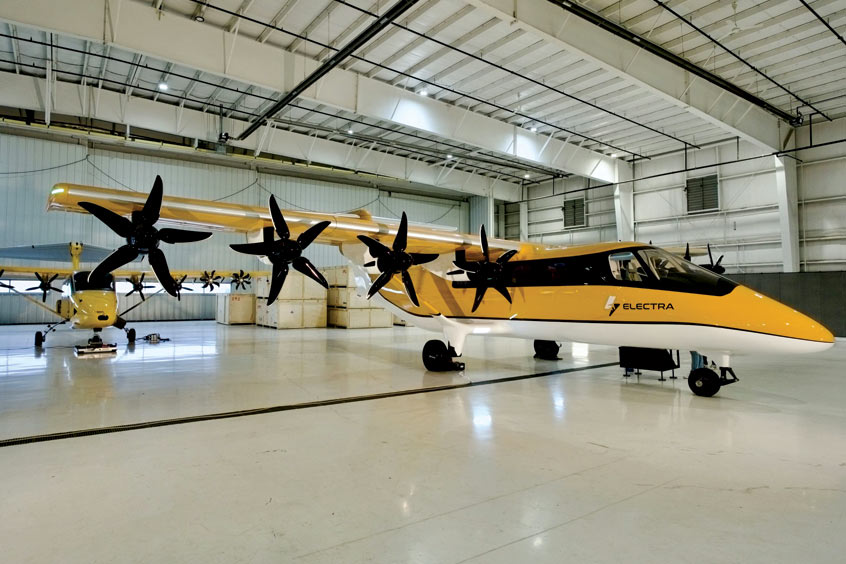The United States Air Force has awarded Electra, in partnership with the Massachusetts Institute of Technology (MIT), a Small Business Technology Transfer (STTR) contract to advance the development of flight control systems for Electra's hybrid-electric ultra-short takeoff and landing (eSTOL) aircraft.
The STTR Phase II contract will fast-track Electra's development of enhanced precision flight control systems for repeatable low-speed, ultra-STOL landings which enable Electra to safely operate its eSTOL aircraft in spaces no larger than a football field. Electra plans to demonstrate the flight control system on a full-scale hybrid eSTOL technology demonstrator aircraft during flight testing later this year.
The highly competitive STTR award follows a Phase I contract last year, under which the Electra-MIT team developed an eSTOL aeropropulsive model, a vehicle sizing tool, and a flight control performance simulation. "We are delighted to continue working with MIT and the U.S. Air Force to develop state-of-the-art flight control systems for ultra-STOL aircraft. Reliable precision landings are key to Electra's ability to deliver runway-independent operations with increased payload, range, and safety for both military and commercial uses," says Chris Courtin, Electra's Lead Engineer of Flight Physics and Controls. "We are honoured to be selected for this contract, and look forward to expanding our technology development partnerships to bring this capability to market."
Dr. Steven Hall, Professor of Aeronautics and Astronautics (AeroAstro) at MIT and former chair of the MIT AeroAstro faculty, is a renowned expert on aerospace control applications and also the Technical Lead for the MIT team. Dr. Hall was previously the MIT lead on the SMART Rotor Team, and winner of the Howard Hughes Award of the Vertical Flight Society. "Electra's distributed electric propulsion approach has great promise to improve STOL aircraft performance," he says. "We're excited for this opportunity to work with Electra and the U.S. Air Force to help develop the flight control system on this innovative aircraft."
Hybrid eSTOL aircraft with precision landing capabilities are well-suited to support runway-independent operations where an airfield may no longer be accessible, in addition to the Air Force's new agile combat employment doctrine by providing middle- and last-mile distributed cargo or island-hopping logistics.
Electra's unique eSTOL aircraft can operate from spaces as small as 300 x 100 feet using its patent-pending distributed electric propulsion and blown lift technology. A small turbine-powered generator recharges the batteries mid-flight, eliminating the need for new ground charging infrastructure. The quieter and more environmentally friendly aircraft is currently being designed to transport up to 1,800 pounds of cargo or move nine passengers up to 500 miles. Electra's aircraft can operate in a variety of environments ranging from busy urban areas to remote landing strips, and fly missions ranging from on-demand passenger flights to cargo transportation, search and rescue operations, medical missions, and more.
| Contact details from our directory: | |
| Electra.aero | Airframer |
| Massachusetts Institute of Technology - MIT | Academic Institutions, Automatic Flight Control Systems |
| Related aircraft programs: |
| Electra.aero eSTOL |
Weekly news by email:
See the latest Bulletin, and sign up free‑of‑charge for future editions.

Saab advances digital manufacturing with autonomous fuselage

Airbus deploys Stratasys printed parts for A320, A350 and A400M

Electra kicks off Part 23 application for hybrid-electric EL9
